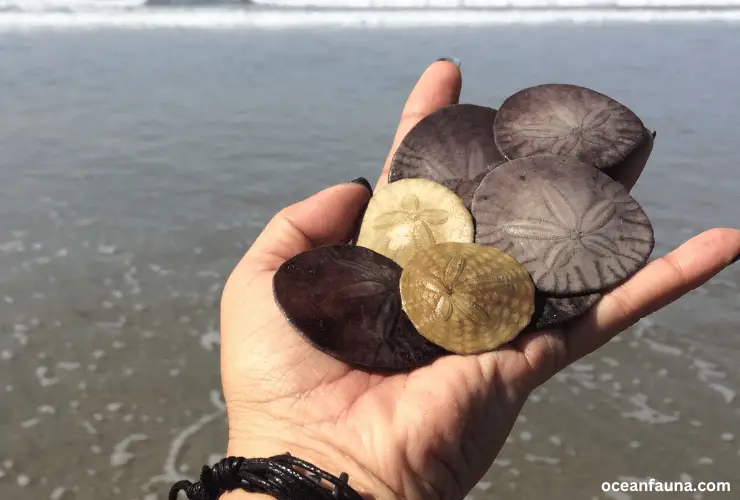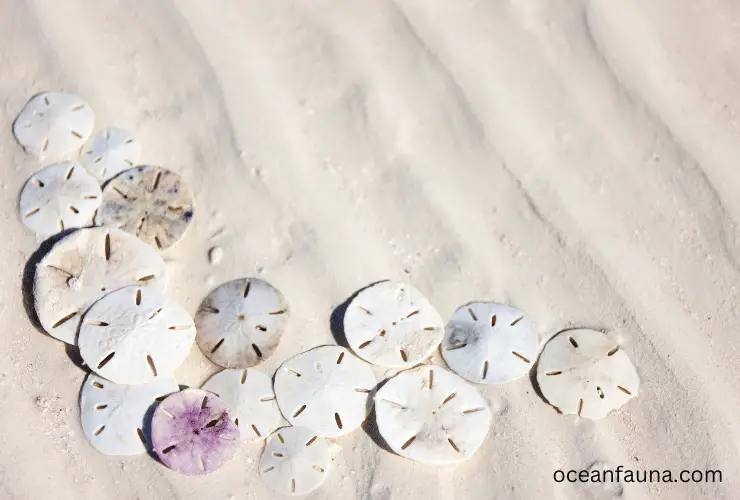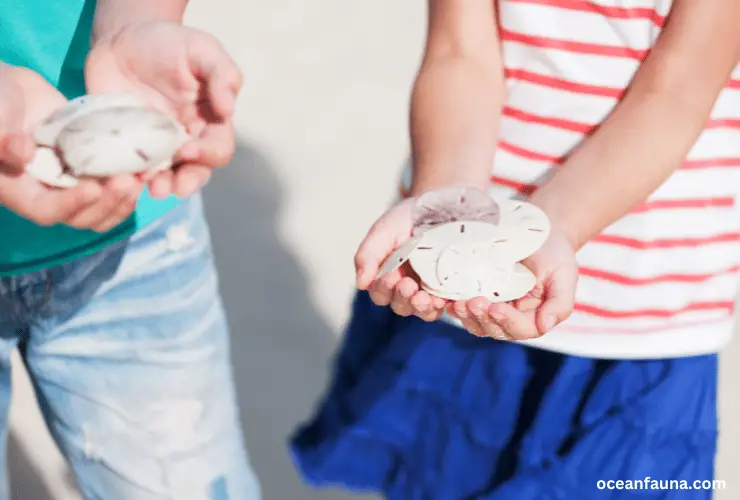Sand dollars reproduce primarily by broadcast spawning, a form of sexual reproduction. In it, both male and female gametes are released in the water, and they fertilize to form embryos. However, sometimes, sand dollars also clone themselves to escape the eye of predators. They usually mate between May to October.
Sand dollars, like other echinoderms, opt for external fertilization that keeps their embryo from dying. Moreover, its embryo has a protective jelly-like coat to survive harsh aquatic conditions.
Longing to learn more about the reproductive system of sand dollars? Then keep calm and buckle down to the next section without any further ado.
How Do Sand Dollars Reproduce?
Sand dollars reproduce by both means sexual and asexual reproduction. In sexual reproduction, they opt for a form of spawning called broadcast spawning.
However, they clone themselves during the larval stage as a mark of asexual reproduction.
● Why Do Sand Dollars opt for Broadcast Spawning?
Sand dollars reproduce sexually by broadcast spawning. In broadcast spawning, both male and female gametes are released into the water. There, the male sperms swim to eggs and fertilize them, turning them into embryos.
The reason why sand dollars and most marine organisms opt for broadcast spawning is their higher reproduction rate.

Since hundreds of eggs and sperms are released in the aquatic water more or less simultaneously, there are more chances of fertilization than free spawning, in which only sperms are released in the marine environment.
However, the eggs are present within the female body, and hence less fertilization takes place.
Moreover, since different species of sand dollars living together release eggs and sperm, there are far greater chances of genetic variability.
● Why Do Sand Dollars Clone Themselves?
Sand dollars clone themselves during the larva stage mostly. It is a common form of asexual reproduction in which the organism divides into two similar organisms with identical genetic sets.
A common misconception is that sand dollars clone themselves only as a cunning way to escape the eye of their predator. But that isn’t always true.
There is no second thought that mostly, a sand dollar larva clones itself when its chemoreceptors signal pheromones of predators.
It helps the sand dollars know that a predator is soon about to strike.
So, the sand dollars clone themselves and reduce in size as a strategic adaptation to escape from predators.
In this way, not only are they able to survive but also divide themselves, and thus increase their population (reproduce).
Apart from that, it is reported that sometimes under optimal temperatures and plentiful food, the sand dollar larvae clone themselves to divert more copies of their successful lineage of genes.
Lastly, some sand dollars also regenerate after metamorphosis. However, it isn’t for replicating.
But instead, they regenerate themselves to reproduce the lost tissues and cells.
What Is the Reproductive System of Sand Dollars Composed of?
The reproductive system of sand dollars is composed of testis and ovaries that release sperm and eggs.
It is found that a sand dollar becomes sexually mature at the age of 3 to 4 years.
Moreover, sand dollars with a size between 115 mm mostly have distinct, well-developed gonads with an equal sex ratio of 1:1.
Similarly, 60% of the organisms between 60 to 105mm also have gonads.
Lastly, sea creatures are known to have the highest gonad index in May and August. That is why it is termed the ideal mating and reproductive season for sand dollars.
The Reproductive Cycle of Sand Dollars- A Quick Overview
The Reproductive Cycle of Sand Dollars is based on four phases: egg, larvae, juvenile, and adult.
- Soon after the sperm and egg hatch, they fertilize through sexual reproduction and form an embryo (fertilized egg).
- The fertilized egg undergoes development and converts into larvae. Here, it forms eight arms and clones itself into two duplicates (asexual reproduction). It helps increase not only the number but also the survival rate.
- Then the larva undergoes metamorphosis and becomes juvenile. It is the ultimate stage of development as the sand dollar develops all the internal organs and organ systems within a short span of 7 days.
- Later, it changes into an adult and spends the rest of its life in that phase.
Are Sand Dollars Dioecious?
Yes!
Sand dollars are dioecious, just like humans. They have male and female gametes present on separate individuals.
Therefore, we generally don’t categorize them as hermaphrodites or monoecious. Rather they are dioecious. Either of the two sexual organs is present in them.
However, a few cases were reported to find monoecious sand dollars.
How Do Sand Dollars Fertilize?
Sand dollars opt for external fertilization. The male and female individuals release sperm and eggs in the water. The sperm then swim to eggs and fertilize the embryos.

In an aquatic environment (marine water), there are chances of less fertilization because sperm and egg clouds are randomly scattered.
To overcome this difficulty, sand dollars live in a crowded group called Purses. Nearly 625 sand dollars live in one square yard of water.
As a result, more sperm collide with eggs and fuse to form fertilized eggs (embryos).
That is why sand dollars prefer to live in clustered form. It increases their fertilization success rate.
When Do Sand Dollars Get Sexually Mature?
Sand dollars are generally known to get sexually mature at the age of 3 to 4 years. By this time, they have properly developed gonads and achieved their sexuality.
What Does a Fertilized Sand Dollar Look Like?
Although sand dollars are oviparous and are fertilized outside the female body, they have various adaptations to survive harsh environmental challenges successfully.
The fertilized egg is yellowish-brown and has a protective jelly-like covering, like amphibians.
It is a gelatinous coat that prevents the embryos from drying out as well as protects them from being eaten up by predators.
Moreover, a fertilized embryo is very small, mostly less than 1/500th of an inch.
When Do Sand Dollars Reproduce? The Favorable Time!
Sand dollars spawn and reproduce mostly from May to October. During this time, they have a high gonadosomatic index those aid in breeding and thus makes it the best time for mating.
Female sand dollars release more than 3 lac eggs, and many of them get fertilized.
Frequently Asked Questions
Q.1 Are sand dollars oviparous?
Yes!
Sand dollars are oviparous. Their females lay eggs that are fertilized outside the body in an aquatic environment.
Q.2 How do sea urchins reproduce?
Sea urchins also reproduce both sexually and asexually. They reproduce sexually by broadcast spawning, just like sand dollars. However, they reproduce asexually by various means, including cloning, fragmentation, regeneration, etc.
Q.3 Do sand dollars remain with their parent bed?
No!
Sand dollars don’t remain in their parent’s beds forever. As soon as they fertilize, the embryo and larvae swim freely in the water. However, they bury themselves in the deep sandy bottom either during or shortly after metamorphosis. There, they often cluster in groups.
Final Verdict
Sand dollars undergo both sexual and asexual modes of reproduction. They undergo broadcast spawning in sexual reproduction and reproduce asexually by cloning. They are dioecious and mostly mate between May to August.


2 thoughts on “How Do Sand Dollars Reproduce? [Explained]”